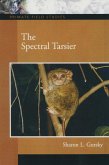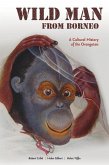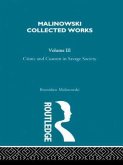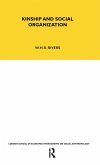Applies an ethnographic perspective to the study of primates
Primate Ethnographies, 1/e, is a collection of first-person accounts of immersive field studies of primates, people, and institutions, revealing the wide spectrum of primate science (primatology). Essays cover such primates as lemurs, New World monkeys, Old World monkeys, and apes. Readers experience the excitement of discovery and the challenges of primate field research. Primate Ethnographies can be used as a textbook or a companion reader.
MySearchLab is a part of the Strier program. Research and writing tools, including access to academic journals, help students explore ethnography in even greater depth. To provide students with flexibility, students can download the eText to a tablet using the free Pearson eText app.
This title is available in a variety of formats – digital and print. Pearson offers its titles on the devices students love through Pearson’s MyLab products, CourseSmart, Amazon, and more. To learn more about pricing options and customization, click the Choices tab.
Product Description
Applies an ethnographic perspective to the study of primates
Primate Ethnographies, 1/e, is a collection of first-person accounts of immersive field studies of primates, people, and institutions, revealing the wide spectrum of primate science (primatology). Essays cover such primates as lemurs, New World monkeys, Old World monkeys, and apes. Readers experience the excitement of discovery and the challenges of primate field research. Primate Ethnographies can be used as a textbook or a companion reader.
MySearchLab is a part of the Strier program. Research and writing tools, including access to academic journals, help students explore ethnography in even greater depth. To provide students with flexibility, students can download the eText to a tablet using the free Pearson eText app.
NOTE: MySearchLab does not come automatically packaged with this text. To purchase the text with MySearchLab, order the package ISBN:
0205998631 / 9780205998630 Primate Ethnographies Plus MySearchLab with Pearson eText -- Access Card Package
Package consists of:
0205214665 / 9780205214662 Primate Ethnographies
0205239927 / 9780205239924 MySearchLab with Pearson eText -- Valuepack Access Card
Features + Benefits
Presents Original Case Studies – Essays are organized into four sections with overlapping focus: Starting Out, Social Complexities, Comparative Lenses, and Changes with Time. This arrangement highlights particular aspects of the narrative. An appendix provides cross-listings by regions, species studies, and key themes and concepts, identifying connections among chapters and alternate ways of sorting the material.
Integrates the Human Dimensions of Primate Research – Interactions with researchers are examined to show the influence of humans on primate field research. An emphasis on ethical and conservation concerns demonstrate the increasingly important role that primate field researchers are playing in helping to protect primates and their habitats from extinction.
Discusses Methodologies of Field Researchers – Primatologists discuss methodological approaches used to test hypotheses and to advance understanding of primates. The material also covers the social and ecological contexts in which primate-related discoveries have been made.
Illustrates Topics Discussed – Over 80 photographs of primates and primate researchers appear throughout the book. Maps of field sites accompany their respective essays.
PART I: INTRODUCTION
1. Primate Ethnographies: The Biological and Cultural Dimensions of Field Primatology
By Karen B. Strier
PART II: STARTING OUT
2. There and Back Again: A Primatologist’s Tale
By Jim Moore
3. Moonlit Walks: A Serendipitous Journey from Baboons and Chimpanzees to Nocturnal Primates
By Leanne T. Nash
4. The Lure of Lemurs to an Anthropologist
By Robert W. Sussman
5. On the Ground Looking Up
By Kenneth Glander
6. Learning to Become a Monkey
By Michael A. Huffman
PART III: SOCIAL COMPLEXITIES
7. The Accidental Primatologist: My Encounters with Pygmy Marmosets and Cotton-top Tamarins
By Charles T. Snowdon
8. Of Monkeys, Moonlight, and Monogamy in the Argentinean Chaco
By Eduardo Fernandez-Duque
9. Stress in the Wilds
By Jacinta C. Beehner and Thore J. Bergman
10. Baboon Mechanics
By S. Peter Henzi and Louise Barrett
11. The Graceful Asian Ape
By Ulrich H. Reichard
PART IV: COMPARATIVE LENSES
12. Studying Lemurs on Three Continents
By Peter M. Kappeler
13. A Tale of Two Monkeys
By Stephen F. Ferrari
14. There’s a Monkey in my Kitchen (and I Like It): Fieldwork with Macaques in Bali and Beyond
By Agustín Fuentes
15. Gorillas Across Time and Space
By Martha M. Robbins
16. Chimpanzee Reunion
By Craig Stanford
PART V: CHANGES WITH TIME
17. Questions My Mother Asked Me: An Inside View of a Thirty-Year Primate Project in a Costa Rican National Park
By Linda Marie Fedigan
18. Male Bands in the Amazonian Rainforest
By Anthony Di Fiore
19. Blue Monkeys and Bridges: Transformations in Habituation, Habitat and People
By Marina Cords
20. The Evolution of a Conservation Biologist
By Colin A. Chapman
21. Studying Apes in a Human Landscape
By Jill D. Pruetz
APPENDIX: Tables of Cross-Referenced Regions, Species, and Key Topics and Concepts
Applies an ethnographic perspective to the study of primates Primate Ethnographies, 1/e, is a collection of first-person accounts of immersive field studies of primates, people, and institutions, revealing the wide spectrum of primate science (primatology). Essays cover such primates as lemurs, New World monkeys, Old World monkeys, and apes. Readers experience the excitement of discovery and the challenges of primate field research. Primate Ethnographies can be used as a textbook or a companion reader. MySearchLab is a part of the Strier program. Research and writing tools, including access to academic journals, help students explore ethnography in even greater depth. To provide students with flexibility, students can download the eText to a tablet using the free Pearson eText app. NOTE: MySearchLab does not come automatically packaged with this text. To purchase the text with MySearchLab, order the package ISBN: 0205998631 / 9780205998630 Primate Ethnographies Plus MySearchLab with Pearson eText -- Access Card Package Package consists of: 0205214665 / 9780205214662 Primate Ethnographies 0205239927 / 9780205239924 MySearchLab with Pearson eText -- Valuepack Access Card
Primate Ethnographies, 1/e, is a collection of first-person accounts of immersive field studies of primates, people, and institutions, revealing the wide spectrum of primate science (primatology). Essays cover such primates as lemurs, New World monkeys, Old World monkeys, and apes. Readers experience the excitement of discovery and the challenges of primate field research. Primate Ethnographies can be used as a textbook or a companion reader.
MySearchLab is a part of the Strier program. Research and writing tools, including access to academic journals, help students explore ethnography in even greater depth. To provide students with flexibility, students can download the eText to a tablet using the free Pearson eText app.
This title is available in a variety of formats – digital and print. Pearson offers its titles on the devices students love through Pearson’s MyLab products, CourseSmart, Amazon, and more. To learn more about pricing options and customization, click the Choices tab.
Product Description
Applies an ethnographic perspective to the study of primates
Primate Ethnographies, 1/e, is a collection of first-person accounts of immersive field studies of primates, people, and institutions, revealing the wide spectrum of primate science (primatology). Essays cover such primates as lemurs, New World monkeys, Old World monkeys, and apes. Readers experience the excitement of discovery and the challenges of primate field research. Primate Ethnographies can be used as a textbook or a companion reader.
MySearchLab is a part of the Strier program. Research and writing tools, including access to academic journals, help students explore ethnography in even greater depth. To provide students with flexibility, students can download the eText to a tablet using the free Pearson eText app.
NOTE: MySearchLab does not come automatically packaged with this text. To purchase the text with MySearchLab, order the package ISBN:
0205998631 / 9780205998630 Primate Ethnographies Plus MySearchLab with Pearson eText -- Access Card Package
Package consists of:
0205214665 / 9780205214662 Primate Ethnographies
0205239927 / 9780205239924 MySearchLab with Pearson eText -- Valuepack Access Card
Features + Benefits
Presents Original Case Studies – Essays are organized into four sections with overlapping focus: Starting Out, Social Complexities, Comparative Lenses, and Changes with Time. This arrangement highlights particular aspects of the narrative. An appendix provides cross-listings by regions, species studies, and key themes and concepts, identifying connections among chapters and alternate ways of sorting the material.
Integrates the Human Dimensions of Primate Research – Interactions with researchers are examined to show the influence of humans on primate field research. An emphasis on ethical and conservation concerns demonstrate the increasingly important role that primate field researchers are playing in helping to protect primates and their habitats from extinction.
Discusses Methodologies of Field Researchers – Primatologists discuss methodological approaches used to test hypotheses and to advance understanding of primates. The material also covers the social and ecological contexts in which primate-related discoveries have been made.
Illustrates Topics Discussed – Over 80 photographs of primates and primate researchers appear throughout the book. Maps of field sites accompany their respective essays.
PART I: INTRODUCTION
1. Primate Ethnographies: The Biological and Cultural Dimensions of Field Primatology
By Karen B. Strier
PART II: STARTING OUT
2. There and Back Again: A Primatologist’s Tale
By Jim Moore
3. Moonlit Walks: A Serendipitous Journey from Baboons and Chimpanzees to Nocturnal Primates
By Leanne T. Nash
4. The Lure of Lemurs to an Anthropologist
By Robert W. Sussman
5. On the Ground Looking Up
By Kenneth Glander
6. Learning to Become a Monkey
By Michael A. Huffman
PART III: SOCIAL COMPLEXITIES
7. The Accidental Primatologist: My Encounters with Pygmy Marmosets and Cotton-top Tamarins
By Charles T. Snowdon
8. Of Monkeys, Moonlight, and Monogamy in the Argentinean Chaco
By Eduardo Fernandez-Duque
9. Stress in the Wilds
By Jacinta C. Beehner and Thore J. Bergman
10. Baboon Mechanics
By S. Peter Henzi and Louise Barrett
11. The Graceful Asian Ape
By Ulrich H. Reichard
PART IV: COMPARATIVE LENSES
12. Studying Lemurs on Three Continents
By Peter M. Kappeler
13. A Tale of Two Monkeys
By Stephen F. Ferrari
14. There’s a Monkey in my Kitchen (and I Like It): Fieldwork with Macaques in Bali and Beyond
By Agustín Fuentes
15. Gorillas Across Time and Space
By Martha M. Robbins
16. Chimpanzee Reunion
By Craig Stanford
PART V: CHANGES WITH TIME
17. Questions My Mother Asked Me: An Inside View of a Thirty-Year Primate Project in a Costa Rican National Park
By Linda Marie Fedigan
18. Male Bands in the Amazonian Rainforest
By Anthony Di Fiore
19. Blue Monkeys and Bridges: Transformations in Habituation, Habitat and People
By Marina Cords
20. The Evolution of a Conservation Biologist
By Colin A. Chapman
21. Studying Apes in a Human Landscape
By Jill D. Pruetz
APPENDIX: Tables of Cross-Referenced Regions, Species, and Key Topics and Concepts
Applies an ethnographic perspective to the study of primates Primate Ethnographies, 1/e, is a collection of first-person accounts of immersive field studies of primates, people, and institutions, revealing the wide spectrum of primate science (primatology). Essays cover such primates as lemurs, New World monkeys, Old World monkeys, and apes. Readers experience the excitement of discovery and the challenges of primate field research. Primate Ethnographies can be used as a textbook or a companion reader. MySearchLab is a part of the Strier program. Research and writing tools, including access to academic journals, help students explore ethnography in even greater depth. To provide students with flexibility, students can download the eText to a tablet using the free Pearson eText app. NOTE: MySearchLab does not come automatically packaged with this text. To purchase the text with MySearchLab, order the package ISBN: 0205998631 / 9780205998630 Primate Ethnographies Plus MySearchLab with Pearson eText -- Access Card Package Package consists of: 0205214665 / 9780205214662 Primate Ethnographies 0205239927 / 9780205239924 MySearchLab with Pearson eText -- Valuepack Access Card








